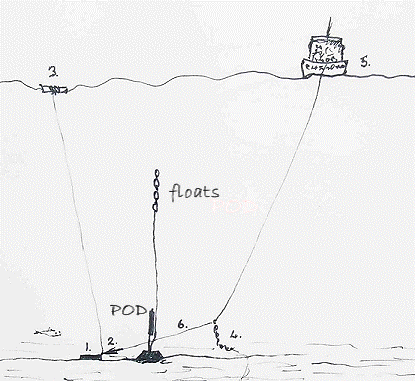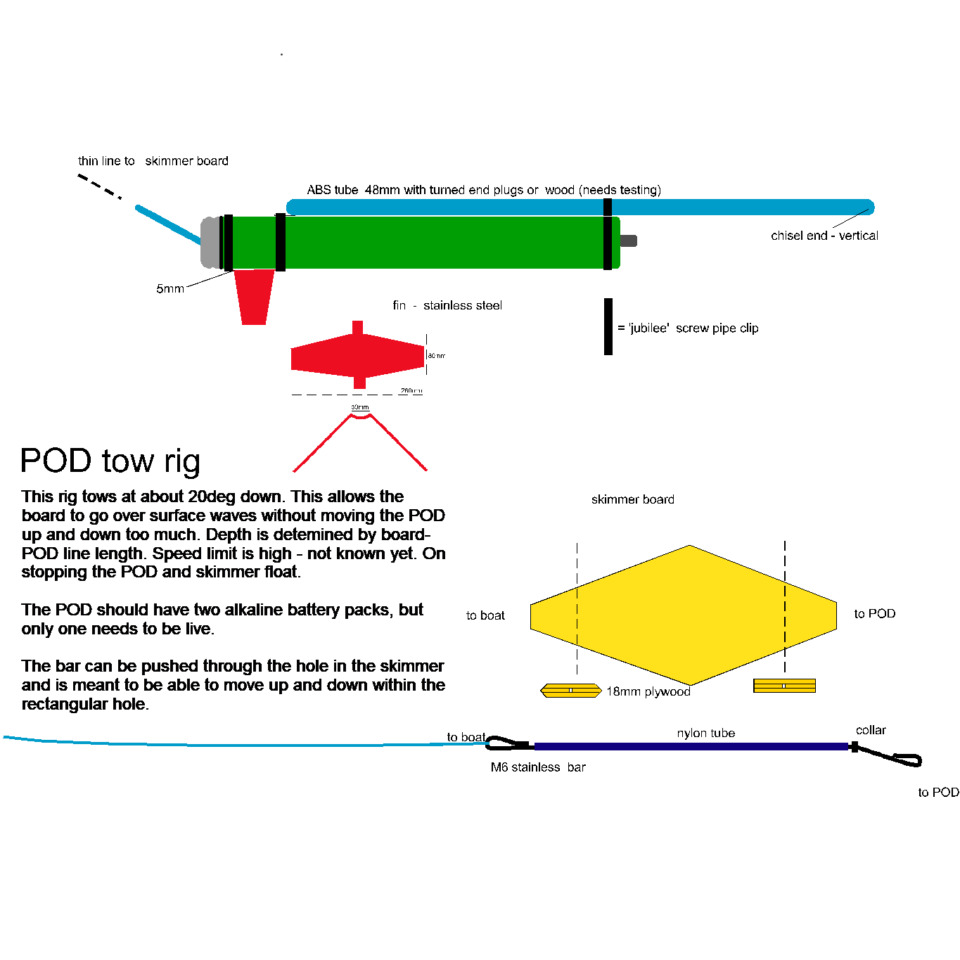Towing PODs
Towed acoustic surveys have proved powerful in measuring sperm whale densities and for other species where the detection range far exceeds the range of responsive movement.
However, for species such as porpoises, where that is not the case, large biases are present in the data and are difficult, or impossible, to remove accurately.
Surveys of finless porpoises in Hong Kong using the T-POD gave high detection rates with good correspondence to visual detections. By contrast, surveys in the Celtic and Irish Seas showed much lower rates of acoustic detection of sighted animals. The most plausible explanation appeared to be that Hong Kong is very noisy with intense shipping activity and so the porpoises are used to this environment and respond only to vessels very close to them, whereas in the much quieter Celtic and Irish Seas, avoidance behaviour was clearly seen. Porpoises here turned away from the approaching vessel and became acoustically undetectable until they re-orientated towards the towed sensor, which mostly did not happen while they were still within detection range. This kind of bias may show strong spatial variation depending on local exposure levels, habituation speeds and animal movement rates and the spatial resolution required to remove such biases may not be available from the relatively low spatial detection densities of line survey methods.
There are other factors to consider:
- Population density estimates are made using DISTANCE line transect surveys. This method works by getting a distance from the trackine of all detected animals and fitting a curve – the detection function – to the graph of detection rates against distance from the trackline. g(0) is the term used to represent the proportion of animals on the trackline. If g(0) can be assumed or shown to be 1 (that is 100% detection on the trackline) then the detection function allows all detections within its scope to be used in estimating the density. This can work well if the detection function resembles the bell shaped curve (half of it!) of a normal distribution. If the animals respond strongly to the boat, errors can be large.
- If a population consisted of a combination of both ‘urban’ animals in ship-noisy areas that were relatively detectable, because they did not turn away from boats, and ‘rural’ animals that were so strongly boat averse that they were rarely detected, then serious underestimation would result as the detection function would be dominated by the urban animals. These behavioural differences might arise within hours or days of being in either type of environment and persist for a similar length of time after moving away, so they may exist even where animals are not actually resident.
- Differently noisy boats, changes in speed, in the use of sonars and in the length of the towing rig could all have large effects on the detection function.
- Dolphins can be interested in the boat or the towed gear and stay with them for long periods, re-appearing from time to time as acoustic detections.
- Porpoises mostly seem to move away from the boat and their directional sonar is then undetectable. Later, they re-orientate towards the boat and become detectable if the sensors are far enough astern. That distance is commonly greater than 100 metres.
Despite these problems, it has to be said that if the boat, its speed, its sonar use and the towing distance are all kept the same over a series of re-surveys of the same area, then significant changes may be demonstrable and useful data may be gathered from sea states that reduce visual detections to an insignificant level.
Vertical grapple

The vertical grapple system allows you to deploy a POD without a surface marker and without increasing the risk of it being towed away by a trawler that comes if you use a ground grapple line.
So it has a vertical line that does not each the surface, but you can find it by encircling it ...
For new F-PODs the integral acoustic release is likely a better solution, especially if there is a wreck or patch of rough ground where the POD can be dropped to reduce or remove the risk of trawling.
